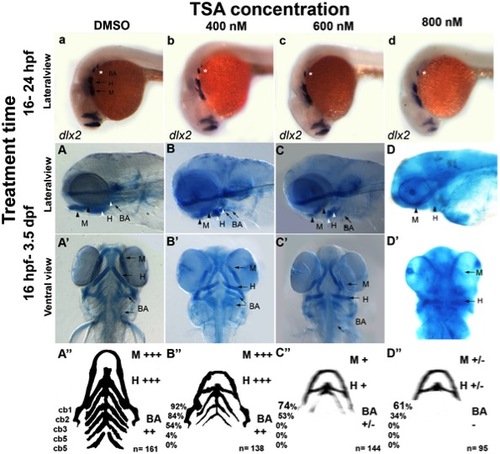|
Treatment with the HDAC inhibitor TSA can reproduce the hdac1b382 mutant phenotype. A–d Lateral views of wild-type embryos treated with DMSO, 400 nM, 600 nM and 800 nM TSA from 16–24 hpf after which embryos were fixed and stained for dlx2 expression. A–D and A′–D′ Alcian blue stained 3.5 dpf wild-type embryos under different TSA treatment conditions, all embryos were treated between 16 hpf and 3.5 dpf after which embryos were fixed and then stained with alcian blue; A–A′ DMSO controls, B–B′ 400 nM TSA, C–C′ 600 nM TSA, D–D′ 800 nM TSA. A–D lateral view; A′–D′ ventral views. A′′–D′′ schematic with summary of craniofacial defects at different TSA treatment conditions. M, mandibular; H, hyoid; cb1-5, cerato-branchials 1-5; BA, branchial arches,+++ wild-type,++ reduced in size compared to wild-type,+severely reduced compared to wild-type, +/ severely reduced or absent altogether.
|

